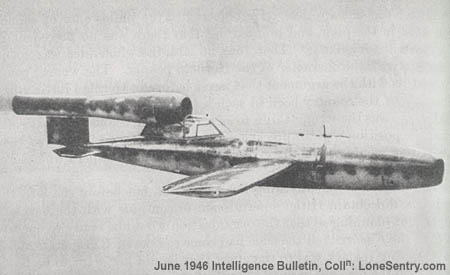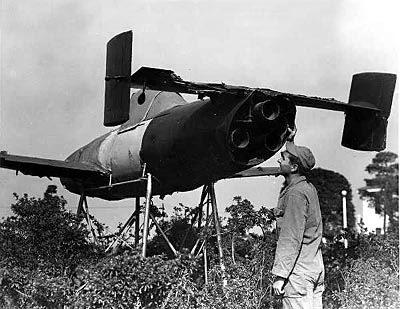The Ohka bomb is truly a show of how desperate the japanese were
i agree completely
it was a plane made just for kamakazie attacks
basicly it was a V-2 with a pilot
i read their max. range was 23 miles and they were launched from 25 miles
wats kinda stupid is the betty bombers would fly to 25 miles within their target. and drop the ohka bombs. which had a range of 23 miles
(according to a book i read)
they were released from bettys with modified bomb bays
sorry sherman man said the same thing at the exact same time. kinda odd dont u think
another example of japanese stupidity
yep!!
we must have read the same book
thier pilot was actually welded shut in there. no turning back i guess
what book was it?
heres a image of the “piloted bomb”
they spelled ohka ‘baka’ in the diagram for some reason
Ohka means Cherry Blossom in japanese…I dont get it
Sherman man, try to make less post with more content.
And by the way it was a missile.
A suicidal flying bomb doesnt remind me of a cherry blossom at all
Does it?Flying bomb
From Wikipedia, the free encyclopedia
Jump to: navigation, search
Yokosuka MXY-7 OhkaA flying bomb is an unmanned aerial vehicle or small aircraft carrying a large explosive warhead, a precursor to contemporary cruise missiles. In contrast to a bomber aircraft, which is intended to release bombs and then return to its base for re-use, a flying bomb crashes into its target and is therefore itself destroyed in its attack.
The first attempt to build a flying bomb (alternatively called an “aerial torpedo” in the Navy) was undertaken by Elmer Sperry in 1916, called the Hewitt-Sperry Automatic Airplane, and was based on a Curtiss N-9 seaplane. This led to a mission-specific Curtis design, the Curtiss-Sperry Flying Bomb, which was almost completely unsuccessful. The US Army also tried to develop a flying bomb in World War I, the Kettering Bug, but the war ended before the program could mature. The most famous example of a flying bomb is the German V-1, many of which targeted London in 1944 during World War II.
Flying bombs may be powered or unpowered, piloted or unpiloted, although unpowered flying bombs such as the German Hagelkorn (“Hailstone”) and Fritz X designed during World War II are usually referred to as glide bombs. Flying bombs differ from missiles in that a flying bomb is equipped with wings to provide lift over a long distance, where missiles are launched on ballistic trajectories and do not rely on lift to reach their targets.
The term flying bomb is most frequently associated with two specific Second World War weapons, the German V-1 and the Japanese Ohka. The former was unpiloted, the latter carried a pilot on a kamikaze mission.
Perhaps because of these Axis connotations, the term cruise missile is more commonly used in English for modern munitions that might otherwise fit the definition of a flying bomb.
Civilian airliners commandeered as terrorist weapons intended to crash into targets, as in the September 11 terrorist attacks, are frequently referred to as “flying bombs” in the media.
heres something from wikipedia
They call it the “Baka” because thats what the yanks nicknamed it.
Baka means “stupid/idiot” in Japanese.
[QUOTE=Boff;96574]They call it the “Baka” because thats what the yanks nicknamed it.
Baka means “stupid/idiot” in Japanese.[/QU
i can see why they named it that


(im pretty sure the first one is a prototype piloted V1
